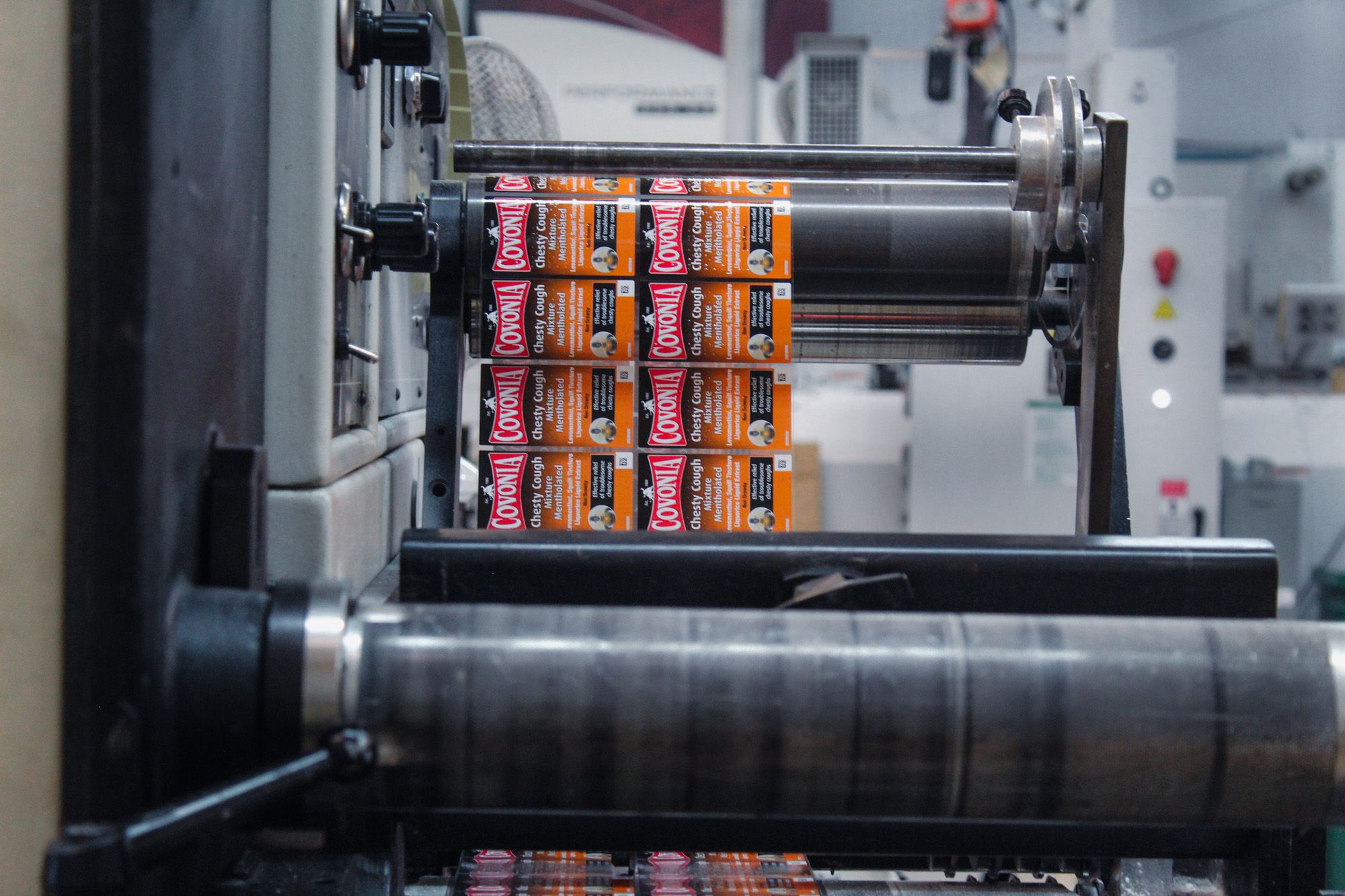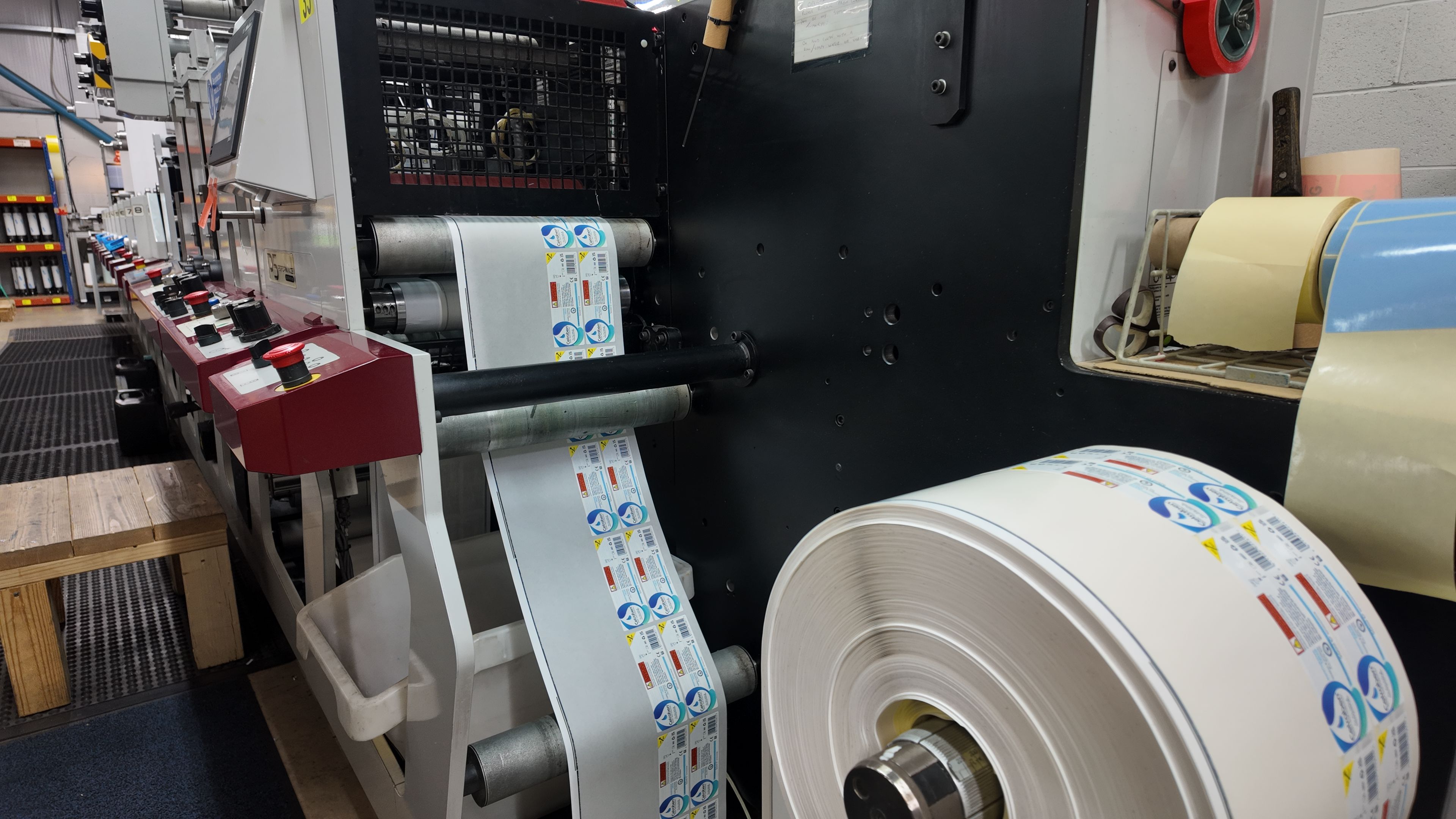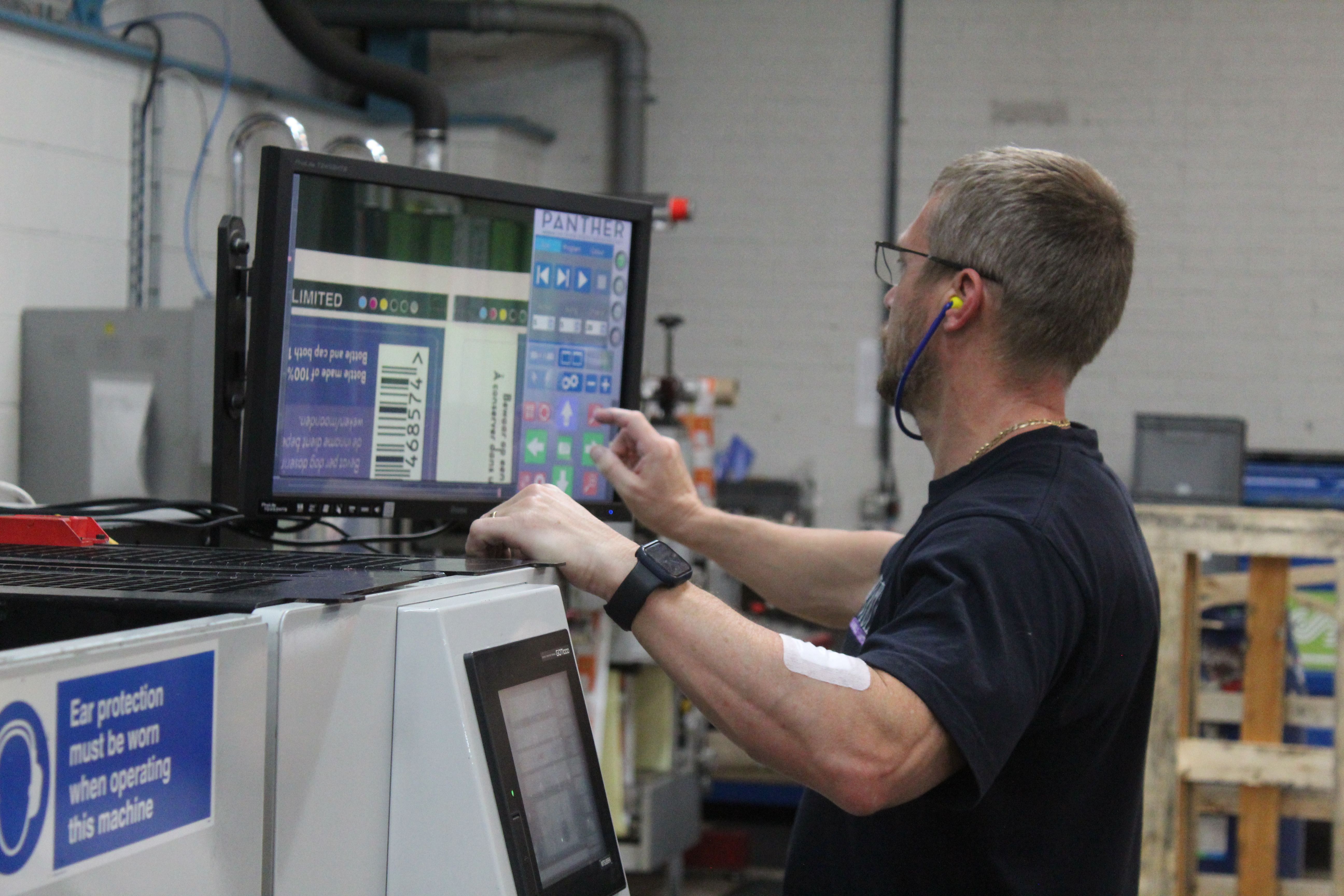
The Essential Guide to Label Printers in the Pharmaceutical Industry
In the pharmaceutical world, labels do a lot more than just show a brand name. They play a huge role in sharing important information about safety and proper use, as well as assisting in staying compliant with regulations. A good drug label clearly lists what's in the medicine—like the active ingredients and other components—and gives easy-to-follow instructions to help people use it safely.
From self-adhesive labels to advanced peel-and-reveal options, let's explore the different types of pharmaceutical labels, the information they must include, and why choosing the right label printer will give you the best quality and compliance.
How Do We Define Labels for Pharmaceuticals?
A pharmaceutical label is any label used to convey essential information on the packaging of medications. Examples of this include prescription labels, compliance and safety labels and warning labels. In the UK, these labels must conform to strict guidelines to ensure that patients, healthcare professionals, and manufacturers can access details about the medicine’s use, storage, and health warnings.
What Information Should Be Included?
Pharmaceutical labels must provide clear and accurate details like the list below to comply with UK regulations and to ensure patient safety.
-
Name and strength of medicine dosage instructions for safe use.
-
Batch number and expiry date.
-
Warnings like “Do not drive while taking this medicine”
-
Storage instructions like “Refrigerate after opening.”
-
Compliance details and safety certifications.

Which Label Types are used in Pharmaceuticals?
Requirements for pharmaceutical labels are varied and complex, so the industry employs several types of labels, and we have listed the most common ones below:
Peel-and-Reveal Labels
Sometimes, labels need to include a lot of information, either because it’s required by law or just necessary for clarity. This might be instructions in multiple languages or detailed dosage guidelines that won’t fit on a standard label. That’s where peel-and-reveal labels come in handy, as they let you add all that extra content without making the packaging look cluttered.
Warning Labels
Warning labels are a bit different from general safety labels because they highlight specific side effects and precautions you need to be aware of. For example, you might see messages like “May cause drowsiness” or “Avoid direct sunlight while taking this medication.” These warnings are usually bold and easy to spot, so you don’t miss them.
Security & Tamper Evident Labels
These labels are placed on pharmaceutical products to prevent unauthorised substitution and tampering. Usually, these labels include one or more security features, like holograms, tamper-evident seals, and distinctive numbering.
Because they guard against product tampering before it reaches the end user, these security labels are a fundamental part of the supply chain management process. In the event of a product recall, these labels are used to trace products.
Braille Labels
Braille pharmaceutical labels are made by embossing the braille text onto self-adhesive labels using a unique printing technique. Thanks to the raised surface created by this process, people who are blind or visually impaired can use their fingertips to read the label.
Pharmaceutical Labelling Regulations in the UK
Drug labelling has changed over time because of the need for public health awareness, toxin identification, and fair-trade practices. Drug-related incidents, healthcare systems, and commercial concerns can all have an impact on the criteria for drug labelling in specific locations. In the UK, pharmaceutical labels must follow guidelines set by:
- The Human Medicines Regulations 2012 – Outlines legal requirements for labelling and packaging, in particular Regulation 257 and Schedule 24. Read more here.
- MHRA – Sets best practices for labelling and packaging to enhance safety and compliance. Explore MHRA guidelines.
- PS 9000 Standard – the globally recognised standard for pharmaceutical packaging materials.
-
-
EU Falsified Medicines Directive (FMD) – Introduces mandatory safety features, such as tamper-evident packaging and unique identifiers (e.g. barcodes), to protect the supply chain against counterfeit medicines.
-
Global Regulatory Frameworks – Aligning labelling solutions with other global regulations such as GMP, ISO 15378, FDA guidelines (USA) and ICH standards, ensuring that labels meet international compliance requirements where needed.

-
Sustainability & Environmental Responsibility in Pharmaceutical Labelling
As sustainability becomes increasingly important across the pharmaceutical industry, label selection is now influenced not only by regulatory compliance but also by environmental impact. Labelling solutions should support manufacturers to reduce their carbon footprint without compromising on quality, safety, or durability.
There are several ways to support more sustainable labelling practices:
- Use of recyclable and responsibly sourced materials. Labels can now be produced using paper or film materials that are either fully recyclable or sourced from certified sustainable suppliers.
- Low-migration inks and adhesives. These reduce the risk of contamination while supporting safer, more environmentally friendly production processes.
- Optimised production processes. Digital printing technologies and efficient label layouts can minimise material waste and energy use during manufacturing.
In addition to material choices, working with a label supplier certified to ISO 14001 – the international standard for environmental management – can help ensure that environmental responsibilities are being met throughout the supply chain. This includes a commitment to continual improvement, legal compliance, and reducing environmental impact across all operations.
By incorporating sustainable labelling into pharmaceutical packaging strategies, companies can align with growing environmental expectations while still meeting the strict demands of regulatory compliance.
What to Look for in a Label Printer
When choosing a label printer for pharmaceutical packaging, there are a few essential things manufacturers need to think about. First and foremost, the adhesive quality really matters as labels need to stick firmly, even when they're exposed to different temperatures or humidity levels. Then there’s print durability. The text on the label has to stay clear and easy to read without smudging or fading over time.
Tamper-evident features are another big one. Many pharmaceutical labels now include anti-counterfeit elements to stop any unauthorised changes. And, of course, readability is key, so using easy-to-read fonts, strong contrast, and a straightforward layout makes all the difference for patients and healthcare providers trying to find the correct information quickly.
Why Work with Vista Labels?
If you need a local label printer specialising in high-quality self-adhesive labels for the pharmaceutical industry, Vista Labels is a name you can rely on. Our extensive experience allows us to cater to the stringent requirements of pharmaceutical labelling. We help you comply with regulatory standards such as the Human Medicines Regulations 2012, EU Falsified Medicines Directive (FMD), and international guidelines, offering custom solutions that align with your market’s needs.
Our custom solutions are designed to handle the complex needs of pharmaceutical packaging, from peel-and-reveal to tamper-evident designs. Using durable materials and precision printing, we help maintain label readability and integrity throughout your product’s lifecycle.
We are certified to PS 9000 and operate under GMP conditions, ensuring our labels meet the highest standards for quality and compliance. With regulations constantly evolving, partnering with a reliable label printer like Vista Labels helps ensure your packaging meets the highest industry standards.
We are proud to holdISO 14001 environmental certification**,** reflecting our commitment to sustainability. We support your sustainability goals with responsibly sourced materials and eco-conscious production practices, helping you meet both compliance and environmental expectations.
We adhere strictly to regulatory guidelines, and with requirements constantly evolving, partnering with a reliable label printer like Vista Labels helps ensure your packaging meets the highest industry standards today and in the future.
Are you planning to upgrade your pharmaceutical labelling? Visit Vista Labels today to explore our expert solutions!